The eleventh in a series of articles I’m writing, looking at the output of a number of Vita-supporting companies from launch through to the present day. I’ll be examining what the games they released were; (if the data is available) how well they sold; (in cases of them being ports) how well they ran; as well as a brief look at games which perhaps should have come to the console either in the west or in general.
Marvelous (previously Marvelous AQL) are exactly the kind of company that have flourished on Vita – a mid-tier Japanese publisher with a variety of IP’s, the majority of which have fit right in with the handheld’s lineup. Similarly, their North American localization arm XSEED Games have seen a variety of success stories in bringing games from both partners (such as Nihon Falcom) as well as their parent company to the west, but sadly this output seems to have dried up sooner than expected.
Launch & 2012 – an XSEED-dominated start
Interestingly, Marvelous AQL – as the company was for the first few years of Vita’s life – was formed just a few months before the console lauched. By merging the companies Marvelous Entertainment (famous for their Harvest Moon and Luminous Arc IP’s) and AQ Interactive (a publisher known for things like the Arcana Heart series), a new mid-tier publisher was born in the market. Despite their relative infancy, the new company got off to a running start with their 3DS support; but on Vita things were much slower.
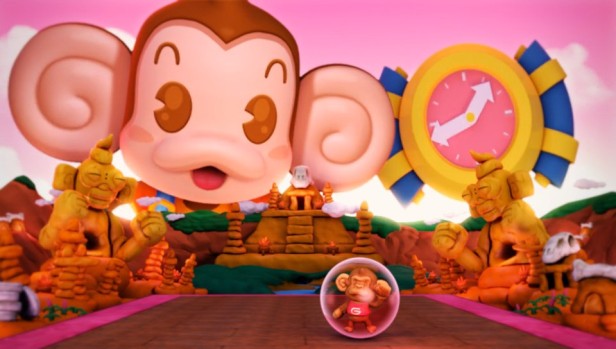 The sole game they published in Japan during the first year of Vita’s life was a port of the PC browser game Sangokushi Next. It launched with the console in December 2011 as a free-to-play title, making it one of the first available on handhelds – but the game stayed Japan-only (along with a number of games from Vita’s launch).
The sole game they published in Japan during the first year of Vita’s life was a port of the PC browser game Sangokushi Next. It launched with the console in December 2011 as a free-to-play title, making it one of the first available on handhelds – but the game stayed Japan-only (along with a number of games from Vita’s launch).
Instead of publishing their own games, however, Marvelous were developing multiple titles for Vita as work-for-hire devs for other publishers. For example, their initial project in 2012 was a port of the previously-Wii-exclusive strategy-role-playing game Little King’s Story for Konami, which released in March in Japan and September of that same year in the west. It was a shaky start thanks to the questionable performance of the port (which suffered from major slowdown in some of the latter parts); but thankfully their second project turned out much better – Super Monkey Ball: Banana Splitz for SEGA. It was a return to form for the franchise, aside from an over-reliance on the handheld’s unique input methods.
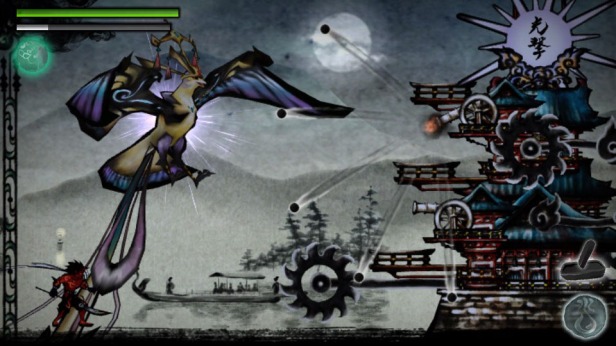 While Marvelous AQL were having a quiet year domestically, XSEED were much busier. They kicked off the first year of Vita’s life in the west in March with the localization of Sumioni: Demon Arts – which continued a long-running trend of partnerships with the Japanese developer Acquire. The release took advantage of the console’s robust online capabilities being a download-only game; a trend they continued with the October release of Orgarhythm (also from Acquire), helping to provide some great digital-only console for the handheld.
While Marvelous AQL were having a quiet year domestically, XSEED were much busier. They kicked off the first year of Vita’s life in the west in March with the localization of Sumioni: Demon Arts – which continued a long-running trend of partnerships with the Japanese developer Acquire. The release took advantage of the console’s robust online capabilities being a download-only game; a trend they continued with the October release of Orgarhythm (also from Acquire), helping to provide some great digital-only console for the handheld.
Their sole retail release for the year was the Vita’s very first western hunting game – Ragnarok Odyssey from developer Game Arts famed for their Grandia series. Despite a somewhat muted critical reception, the fact the title was cashing in on a relatively small market as being one of the few Japanese games available on the console in its first year meant it did relatively well for the company – XSEED VP Ken Berry noted in an interview that pre-orders started strong for the game.
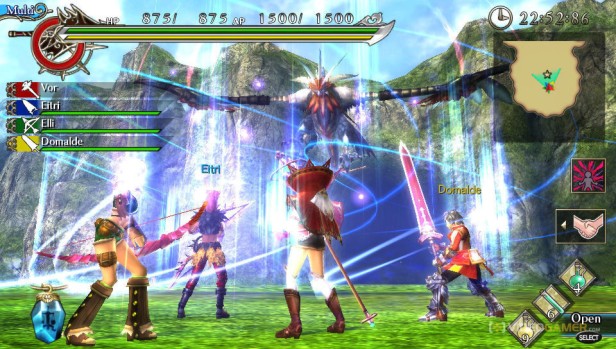 Still, as with many of the publishers I’ve looked at – their first year on Vita was defined not only by what they released, but by what they didn’t release. Chief among missing franchises was Marvelous’ bread and butter – the Harvest Moon/Story of Seasons franchise. The popular farming sim series had received three entries on Sony’s predecessor handheld PlayStation Portable although it had always flourished on Nintendo’s rival handheld the DS – so it was unsurprising to see it shift over to the 3DS with A New Beginning. Still, considering the tech the titles ran on it was disappointing not to see a single game in the series come to Vita throughout its life (perhaps Stardew Valley will one day be able to plug that gap).
Still, as with many of the publishers I’ve looked at – their first year on Vita was defined not only by what they released, but by what they didn’t release. Chief among missing franchises was Marvelous’ bread and butter – the Harvest Moon/Story of Seasons franchise. The popular farming sim series had received three entries on Sony’s predecessor handheld PlayStation Portable although it had always flourished on Nintendo’s rival handheld the DS – so it was unsurprising to see it shift over to the 3DS with A New Beginning. Still, considering the tech the titles ran on it was disappointing not to see a single game in the series come to Vita throughout its life (perhaps Stardew Valley will one day be able to plug that gap).
In a similar vein, the company’s popular Rune Factory series – originally spun-off from Harvest Moon on the PSP as Innocent Life – had gone from strength to strength on DS and received an exclusive entry in 2012 on the 3DS. Again, this was a series that could’ve done very well on the Vita and wouldn’t have been much of a tech leap (although it still sold well on the 3DS).
Overall, 2012 was a good start for both Marvelous and XSEED on Vita, but it wouldn’t be until the coming years that both companies would really begin to come into their own on the console.
2013 – the start of something great
Surprisingly, Marvelous had an absolutely stonking year on Vita in 2013, releasing classic game after classic game – and while XSEED were quieter, they still contributed a lot to the console too.
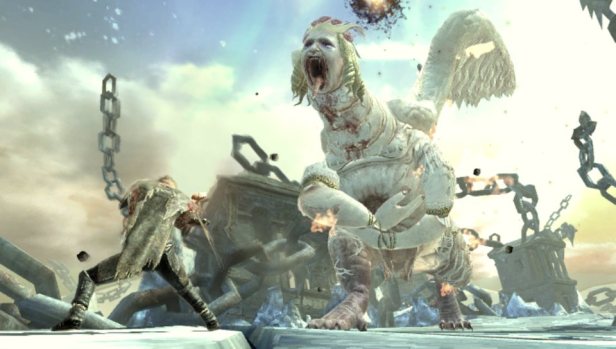 Marvelous kicked off the year – in both Japan and the west – with another work-for-hire project, this time on Sony’s own dark fantasy epic Soul Sacrifice. Working with Keiji Inafune to realise his vision of a hunting game with moral choices and sweeping story, the title was well-received and went on to be a big sales success domestically – shifting over 225k copies, while western sales are unknown (but the game did well enough as a whole to spawn an expanded re-release the following year).
Marvelous kicked off the year – in both Japan and the west – with another work-for-hire project, this time on Sony’s own dark fantasy epic Soul Sacrifice. Working with Keiji Inafune to realise his vision of a hunting game with moral choices and sweeping story, the title was well-received and went on to be a big sales success domestically – shifting over 225k copies, while western sales are unknown (but the game did well enough as a whole to spawn an expanded re-release the following year).
In fact, the whole of the first half of 2013 was littered with Marvelous games. They also had Tamsoft work on the latest entry in their lewd brawler franchise – Senran Kagura – which hit Vita in March as Shinovi Versus and reached series high sales of 170k in Japan, a big step up over the 3DS entries (showing the potential for Vita as a place for certain types of software). Similarly, another franchise achieved a series high sales figure in Japan on Vita – Valhalla Knights 3, the grindy JRPG and sequel to multiple PSP and Wii games shifted more than 65k copies which was a big success for the publisher.
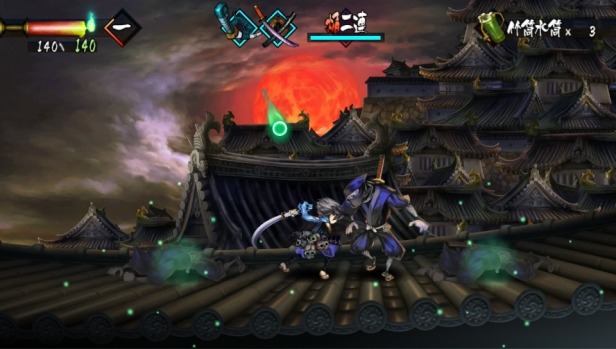 The rest of their year was capped off by a re-release of the classic 2D action-adventure Muramasa, that had originally released on the Wii in 2009. Developed by Vanillaware – who would go on to have a love affair with the Vita that included multiple new titles including Dragon’s Crown and Odin Sphere – the game was bizarrely localized by Aksys Games rather than Marvelous’ subsidiary XSEED Games, who were presumably busy with other projects at the time. Still, the title was a major success – selling more than 100k within a month in Japan.
The rest of their year was capped off by a re-release of the classic 2D action-adventure Muramasa, that had originally released on the Wii in 2009. Developed by Vanillaware – who would go on to have a love affair with the Vita that included multiple new titles including Dragon’s Crown and Odin Sphere – the game was bizarrely localized by Aksys Games rather than Marvelous’ subsidiary XSEED Games, who were presumably busy with other projects at the time. Still, the title was a major success – selling more than 100k within a month in Japan.
Speaking of XSEED, they had a number of projects of their own that were handled during 2013. Chief among these was the localization of Valhalla Knights 3, which saw a western release in October; but even more importantly was Nihon Falcom’s critically beloved Ys: Memories of Celceta which saw an overseas release in November. As previously mentioned, this would continue a long-running partnership between XSEED and Falcom that would lead to two more games as part of this agreement – and it was clearly working for them, as one of XSEED’s staff members noted on their forums that their Vita games were selling quite well.
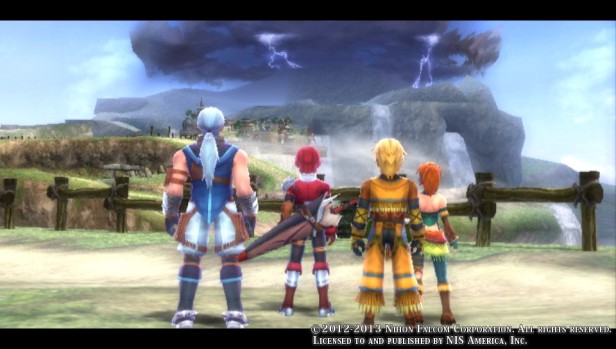 Rather interestingly, XSEED were also still releasing PSP games during this time – all of which were made compatible with Vita in the west, which was a nice touch to enhance the console’s library. Their primary release during the year was Corpse Party: Book of Shadows, a sequel to the Japanese horror franchise that had built a niche but dedicated following in the west. They also decided to localize Unchained Blades from developer FuRyu, but this title didn’t seem to sell particularly well for the company.
Rather interestingly, XSEED were also still releasing PSP games during this time – all of which were made compatible with Vita in the west, which was a nice touch to enhance the console’s library. Their primary release during the year was Corpse Party: Book of Shadows, a sequel to the Japanese horror franchise that had built a niche but dedicated following in the west. They also decided to localize Unchained Blades from developer FuRyu, but this title didn’t seem to sell particularly well for the company.
As with 2012, there were a few titles released during 2013 that I was surprised to see swerve Vita from Marvelous themselves. Leading this list was Fate/Extra CCC, the expanded sequel to a PSP spin-off in the popular Fate franchise – why this only came to PSP I have no idea, but it cemented the game’s fate as a Japan-only title. The popular otome game English Detective Mysteria also appeared as a PSP-only release, but this was rectified years later by the original developers who made a Vita-native port of the game (but sadly, the ship had sailed for localization chances at this point).
As such, 2013 was probably the best year Marvelous ever had on Vita – and it was a solid year for XSEED too, although they would improve their output in the coming years to better serve the ever growing western fanbase of Japanese games.
2014 – XSEED’s year
Compared to 2013, in 2014 Marvelous’ output was way down but XSEED’s was way up – an interesting turn of events, but one that certainly benefited western gamers.
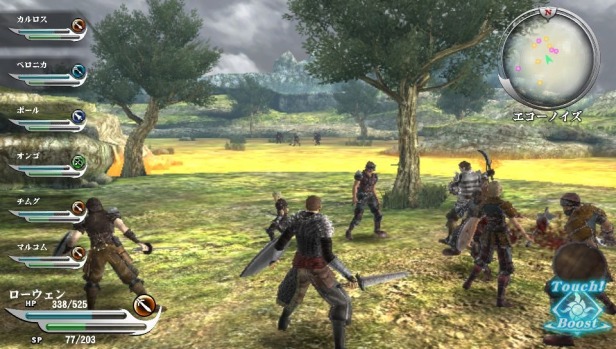 During the year, Marvelous were still handling projects as work-for-hire developers. Based on the success of 2013’s Soul Sacrifice, an expanded re-release was commissioned and was ready in early 2014 as Delta. Critical reception was much stronger for the new version thanks to some much needed gameplay tweaks, but sales saw a downturn with it clearing just 115k in Japan. Western sales are unknown, but given that the title was released as a digital-only game doesn’t inspire confidence.
During the year, Marvelous were still handling projects as work-for-hire developers. Based on the success of 2013’s Soul Sacrifice, an expanded re-release was commissioned and was ready in early 2014 as Delta. Critical reception was much stronger for the new version thanks to some much needed gameplay tweaks, but sales saw a downturn with it clearing just 115k in Japan. Western sales are unknown, but given that the title was released as a digital-only game doesn’t inspire confidence.
Domestically, the publisher had just a few projects to show of their own. They started the year with a bizarre rhythm spin-off to their popular Senran Kagura franchise in Bon Appetit! (which was localized by XSEED within the year); as well as creating their own expanded re-release of 2013’s Valhalla Knights 3 subtitled Gold – sadly, this one stayed Japan-only despite a large range of gameplay improvements made. They also seemed to learn from their mistakes with English Detective Mysteria as their next otome project – Bakumatsu Rock: Ultra Soul – saw a release across both PSP & Vita in Japan.
 It was XSEED’s work overseas that was really defining 2014 on Vita though. Their first pick-up for the year was once again an expanded re-release – this time to 2012’s Ragnarok Odyssey which (as previously mentioned) had been the first hunting game to release on the platform in the west. Ace made a number of gameplay improvements and also added a PS3 version, although given the franchise went dormant after this entry it seems unlikely the title sold particularly well for them.
It was XSEED’s work overseas that was really defining 2014 on Vita though. Their first pick-up for the year was once again an expanded re-release – this time to 2012’s Ragnarok Odyssey which (as previously mentioned) had been the first hunting game to release on the platform in the west. Ace made a number of gameplay improvements and also added a PS3 version, although given the franchise went dormant after this entry it seems unlikely the title sold particularly well for them.
They also continued their partnership with Acquire and brought Akiba’s Trip: Undead & Undressed to the west, the latest entry in the popular open-world brawler franchise that had begun on the PSP. Despite the potentially questionable content (stripping vampires in Japan to expose them to the sun), XSEED committed to the project including providing a full dub (and dual audio) and seemed to be a successful release for the studio, judging by the fact they grabbed the spin-off Akiba’s Beat in 2017 too.
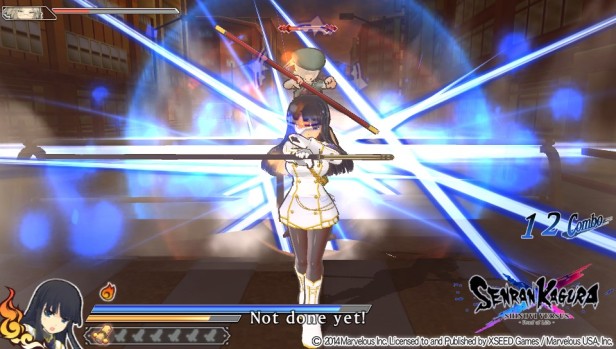 If localizing Akiba’s Trip was a gamble due to content involved, then XSEED went one further later in the year when they localized Senran Kagura: Shinovi Versus in October. Featuring teenage ninjas fighting and ripping each others clothes when damage is caused, the franchise caused a minor media storm when it debuted in the west, but thankfully solid gameplay led to reviewers (myself included!) being impressed with the series – and ensuring its continued future as one of the staples of both Marvelous and XSEED’s lineups.
If localizing Akiba’s Trip was a gamble due to content involved, then XSEED went one further later in the year when they localized Senran Kagura: Shinovi Versus in October. Featuring teenage ninjas fighting and ripping each others clothes when damage is caused, the franchise caused a minor media storm when it debuted in the west, but thankfully solid gameplay led to reviewers (myself included!) being impressed with the series – and ensuring its continued future as one of the staples of both Marvelous and XSEED’s lineups.
Of course I’m going to briefly talk about skipped games during this year too – another entry of the Harvest Moon franchise (this time entitled Story of Seasons in the west) managed to swerve Vita entirely; while a new game from the staff members behind Rune Factory was released 3DS-only as Lord of Magna. Still, it was clear both companies were well on board with Vita at this point – something that they would demonstrate throughout 2015, much to the enjoyment of many fans.
2015 – an outstanding year
Both domestically and overseas, Marvelous and XSEED were on top form with their Vita releases in 2015 – a variety of software was released in a number of genres, nearly all of which was fantastic to play.
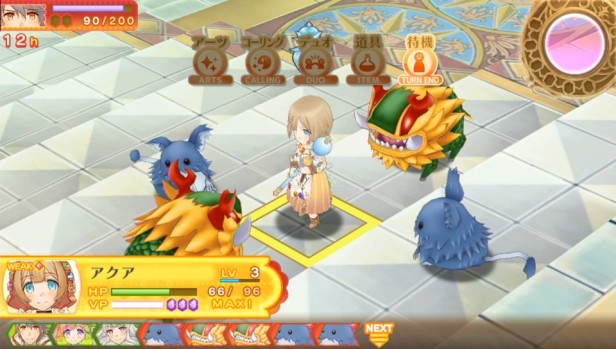 Marvelous started 2015 with a sequel to their hugely popular Senran Kagura: Shinovi Versus entitled Estival Versus. This time around, a PS4 version was added in addition to Vita and this was reflected in both performance and sales – the Vita port had fewer players in the online game; fewer enemies on screen as well as a much less stable framerate, likely as a result of the game being a down-port rather than being developed for the hardware natively. And this was shown in sales – Estival Versus only sold 70k in Japan on Vita which was a big drop from Shinovi Versus, while the PS4 port only made up a portion of the lost numbers.
Marvelous started 2015 with a sequel to their hugely popular Senran Kagura: Shinovi Versus entitled Estival Versus. This time around, a PS4 version was added in addition to Vita and this was reflected in both performance and sales – the Vita port had fewer players in the online game; fewer enemies on screen as well as a much less stable framerate, likely as a result of the game being a down-port rather than being developed for the hardware natively. And this was shown in sales – Estival Versus only sold 70k in Japan on Vita which was a big drop from Shinovi Versus, while the PS4 port only made up a portion of the lost numbers.
Still, the publisher still continued to support Vita throughout the year with a number of other titles. July saw the release of the vocaloid rhythm game IA/VT Colourful which cleared 60k in domestic sales and remained popular among importers; while August saw their revival of the strategy-RPG franchise Luminous Arc with a new entry developed by Felistella entitled Infinity. Sadly this fared less well than IA/VT, clearing just 30k copies domestically – although it managed to do better than their November-released visual novel Net High which sold just 8k copies in Japan, a disappointing result no matter how you look at it. They capped the year off with Valkyrie Drive, their Senran Kagura-inspired brawler which sold around 70k domestically (but was only brought overseas by the kind efforts of PQube).
 Bizarrely, despite the potential quality of all of these titles and the ever-growing eager-ness of the western Vita fanbase to play Japanese-developed games, XSEED opted to not localize any of these games as of the date of this article. It was a bizarre choice given the ease of access to the games, but marked an increasing shift towards PC releases and a Steam-sale focus from the company which seemed to come at the expense of localizations.
Bizarrely, despite the potential quality of all of these titles and the ever-growing eager-ness of the western Vita fanbase to play Japanese-developed games, XSEED opted to not localize any of these games as of the date of this article. It was a bizarre choice given the ease of access to the games, but marked an increasing shift towards PC releases and a Steam-sale focus from the company which seemed to come at the expense of localizations.
In spite of this, they managed to be one of the only publishers to release PSP games in the west in 2015 – with the long awaited Legend of Heroes: Trails in the Sky SC finally seeing a release in October. The game had originally been announced in 2010 but numerous delays hit the project, with it eventually surfacing in 2015 with a PC port in tow. Sadly, fans of the franchise on handhelds weren’t able to play the final entry due to XSEED skipping the PSP versionm; but they did at least treat fans to Brandish: The Last Revenant during 2015 too – both games of course being compatible with Vita.
 Still, XSEED had Vita games planned during 2015 – their flagship game was the latest entry in the Legend of Heroes franchise subtitled Trails of Cold Steel which dropped in December. While no western sales figures are known, the game and its sequel surpassed 1m in worldwide sales, which the western Vita release likely contributed a decent chunk to. Earlier in the month they also localized Earth Defence Force 2: Invaders from Planet Space, but sadly this was overshadowed by a PS4 counterpart in a rather bizarre marketing move from the company.
Still, XSEED had Vita games planned during 2015 – their flagship game was the latest entry in the Legend of Heroes franchise subtitled Trails of Cold Steel which dropped in December. While no western sales figures are known, the game and its sequel surpassed 1m in worldwide sales, which the western Vita release likely contributed a decent chunk to. Earlier in the month they also localized Earth Defence Force 2: Invaders from Planet Space, but sadly this was overshadowed by a PS4 counterpart in a rather bizarre marketing move from the company.
They also managed to grab Corpse Party: Blood Drive from publisher 5pb which completed the trilogy on Vita (including two PSP games) – a nice touch, although the game itself was slated for performance issues and bizarre storytelling.
Sadly, 2015 would be the last year of serious support from both Marvelous and XSEED, as both companies were quick to move on from Vita once its sales started dwindling. This was especially surprising from XSEED – who had supported PSP to the bitter end – although they did still have a few surprises up their sleeves.
2016 – a downturn in output
2016 was undoubtedly a sign of things to come from both companies, as an increasing PC focus took resources away from other platforms.
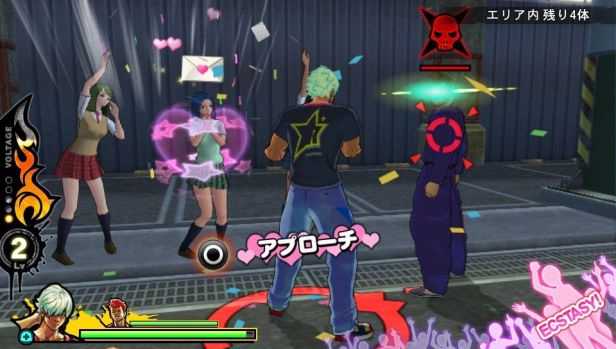 In Japan, Marvelous had just two releases for the whole year – one of which was originally supposed to land in 2015. That game was Uppers, which due to some disastrous marketing (delayed because of low pre-orders?) failed to make any splash in domestic sales, clearing just 12k by the end of the year (fortunately, the game was another popular one with importers). Their other game was markedly more successful – Fate/Extella: The Umbral Star (which somewhat made up for the lack of Fate/Extra CCC earlier in Vita’s life) – which sold more than 115k in Japan and was brought west by XSEED in early 2017. As of the date of writing, Fate/Extella is the last game Marvelous have released for Vita, although there is a small chance Fate/Extella Link may come to the handheld in 2018.
In Japan, Marvelous had just two releases for the whole year – one of which was originally supposed to land in 2015. That game was Uppers, which due to some disastrous marketing (delayed because of low pre-orders?) failed to make any splash in domestic sales, clearing just 12k by the end of the year (fortunately, the game was another popular one with importers). Their other game was markedly more successful – Fate/Extella: The Umbral Star (which somewhat made up for the lack of Fate/Extra CCC earlier in Vita’s life) – which sold more than 115k in Japan and was brought west by XSEED in early 2017. As of the date of writing, Fate/Extella is the last game Marvelous have released for Vita, although there is a small chance Fate/Extella Link may come to the handheld in 2018.
Overseas, XSEED were having a slightly better year. They brought expected localizations such as Senran Kagura: Estival Versus as well as Legend of Heroes: Trails of Cold Steel II throughout the year, both of which provided plenty of content to keep fans of the console busy and received full retail releases (which was becoming somewhat of a rarity on the console). The year would more be marked by the company’s continued expansion into the PC market, however, as games such as Corpse Party; Little King’s Story and Senran Kagura: Shinovi Versus all made the jump to Steam throughout the year.
 However, the company did have a couple of tricks up their sleeves which fans may have not been expecting – that is an expansion into the indie game publishing market. The studio’s first funded title – Exile’s End – released for Vita in October alongside Wii-U and PS4 versions and they also handled a physical release of Shantae: Half Genie Hero from developer Wayforward. It was an interesting change of pace for the team and while the success of these projects remains unknown, it suggested that Vita could still be a part of their plans going forward.
However, the company did have a couple of tricks up their sleeves which fans may have not been expecting – that is an expansion into the indie game publishing market. The studio’s first funded title – Exile’s End – released for Vita in October alongside Wii-U and PS4 versions and they also handled a physical release of Shantae: Half Genie Hero from developer Wayforward. It was an interesting change of pace for the team and while the success of these projects remains unknown, it suggested that Vita could still be a part of their plans going forward.
Overall, 2015 wasn’t a bad year – but it was a bittersweet year considering the projects passed over by XSEED ranging from Luminous Arc to Uppers. Sadly it was a precursor of things to come, as both Marvelous and XSEED had little to show during 2017 and nothing planned beyond that.
2017 & 2018 – (not) to be continued
Sadly 2017 looks to be the last year that XSEED release anything for Vita – despite the fact they were there for PSP until 2015 – which is a sad end for a company who released so much quality content over the years.
 Of course, the company haven’t been completely silent during the year. Fate/Extella received a western release in January followed by Akiba’s Beat – the latest otaku-focused JRPG from Acquire – in May. Sadly, neither Marvelous nor XSEED have anything else planned – Marvelous are going full steam ahead on Switch with series like No More Heroes; Senran Kagura and Story of Seasons moving over; while XSEED continue their PC assault with nearly all of Falcom’s back-catalog getting the port treatment.
Of course, the company haven’t been completely silent during the year. Fate/Extella received a western release in January followed by Akiba’s Beat – the latest otaku-focused JRPG from Acquire – in May. Sadly, neither Marvelous nor XSEED have anything else planned – Marvelous are going full steam ahead on Switch with series like No More Heroes; Senran Kagura and Story of Seasons moving over; while XSEED continue their PC assault with nearly all of Falcom’s back-catalog getting the port treatment.
In and of itself, 2017 wouldn’t be a bad year for a publisher on Vita at this late stage in its life – but considering XSEED’s history with releasing games late into a console’s lifecycle (they were also releasing games on Wii in 2013) combined with a number of skipped titles from parent company Marvelous, it made for a rather bittersweet lineup and far removed from the company’s glory days of coming up with surprise localization announcements every year.
Conclusion
As I’ve examined both Marvelous and XSEED in this article, it occurs to me how different to the norm both publishers have been – the majority of Japanese companies I examine in these articles start off slow and ramp up their Vita output over the years, leading to some massive surprises like Square Enix’s 2016 or Nippon Ichi’s 2017. Bizarrely, it’s the reverse here, with both companies peaking around 2013 and slowing down after that.
Marvelous have undoubtedly done well from Vita, having some decent hits on the console like Muramasa Rebirth and Senran Kagura: Shinovi Versus; but they also seemed to suffer from poorly marketed games domestically like Luminous Arc Infinity or Net High which led to some disappointing sales. Still, as a whole the company have released a variety of fun titles that have definitely enhanced Vita’s library. And while I continue to be somewhat deflated about XSEED’s decision to drop Vita and pass up on some brilliant games, I equally can’t fault them for what they have released. Bringing things like Earth Defence Force 2 or Orgarhythm west were major gambles which I appreciate and they’ve provided literally hundreds of hours of brilliant JRPG’s with their localizations of Falcom’s Trails and Ys games which I’m incredibly thankful for.
I can’t help but lament what could have been with brilliant looking titles such as IA/VT and Uppers passed over due to an increasing PC focus but overall, both XSEED and Marvelous contributed in an incredibly positive way to Vita’s library with some brilliant titles.
